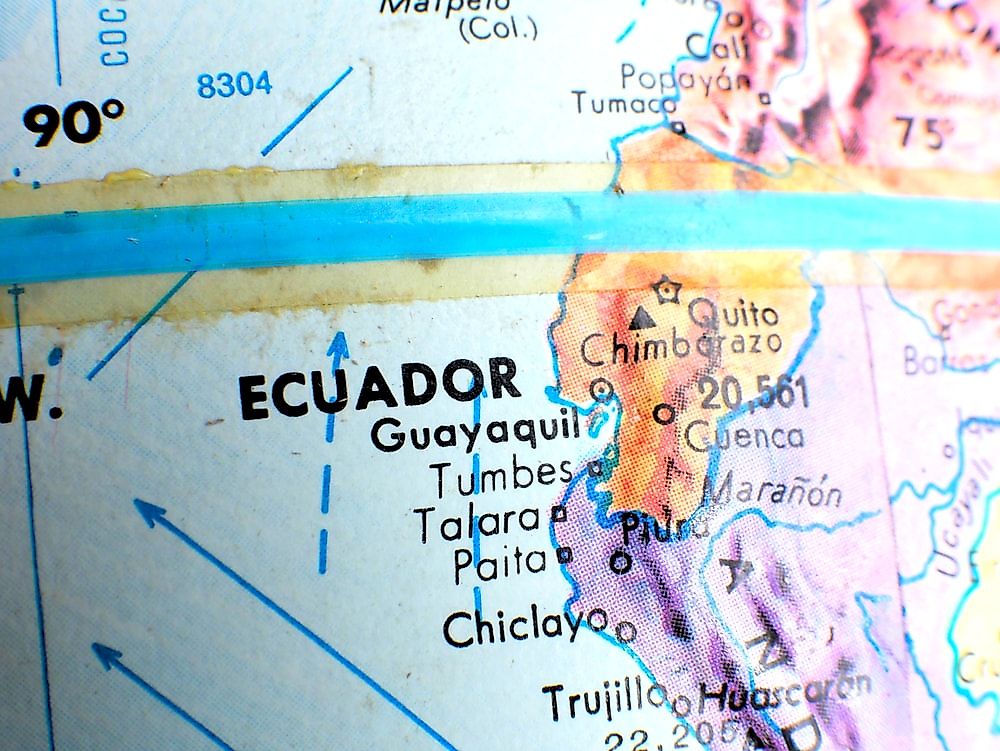Where is the Equator?

The equator is an imaginary line of latitude around the earth, or any other planet, that separates it into two equal parts, normally the northern hemisphere and the southern hemisphere. The equator acts as the center between the north and south poles. At the equator, the earth’s surface sits parallel to its rotational axis. The word equator means the “even-marker” in Latin. On earth, this imaginary line is 24,901 miles long with 78.7% of it passing over water bodies and only 21.3% passing over land.
Countries and Territories Along the Equator
Technically, the equator is not fixed to the true equatorial plane because the plane drifts with the polar motion of the earth for about 30 feet throughout the year. Globally, the equator crosses the following bodies of water:
- The Atlantic Ocean (at the Gulf of Guinea and the Perigoso Canal)
- The Pacific Ocean (between Aranuka and Nonouti atolls in Kiribati)
- Lake Victoria (in Kenya)
- The Indian Ocean (between the Huvadhu Atoll and Fuvahmulah in the Maldives)
- Karimata and Makassar Straits in Indonesia
- Gulf of Tomini
- Molucca Sea
- Halmahera Sea
The equator also passes through several areas in the following countries:
- São Tomé and Príncipe
- Gabon
- Republic of the Congo
- Democratic Republic of the Congo
- Uganda
- Kenya
- Somalia
- Indonesia
- Ecuador
- Colombia
- Brazil
Characteristics of Places Along the Equator
The earth’s diameter is widest at its equator. Places along the equator experience the quickest sunsets and sunrises with an almost equal length of day and night throughout the year. These places are also generally humid without the four distinct seasons. There is no snow on the equator apart from high altitude peaks like the Volcán Cayambe in Ecuador. Other high-altitude peaks like the Andes and Mount Kilimanjaro have glaciers. Countries along the equator such as Brazil, Congo, and Indonesia host more than half of the global rainforest.
Climate and Seasons Along the Equator
As seasons occur due to the tilting of the earth’s poles towards or away from the sun, the area along the equator remains mostly perpendicular to the sun’s rays resulting to only a small change in temperature and length of day and night. The only notable change along the equator is humidity and rainfall and therefore there is no distinct summer, autumn, winter, and spring. Low altitude areas along the equator experience tropical rainforest climatic conditions although some oceanic currents may cause some of the areas to experience tropical monsoon or arid climates.
A Common Myth and Misconception About the Equator
One of the most common myths about the equator is the Coriolis effect. Often, people believe that when flushing a toilet, water spins in different directions depending on which side of the hemisphere a person stands. This misconception escalates further to state that the moon turns upside down once it crosses the equator. The truth is, the Coriolis effect of the earth’s rotation is too small to affect a basin full of water or a flushing toilet.











